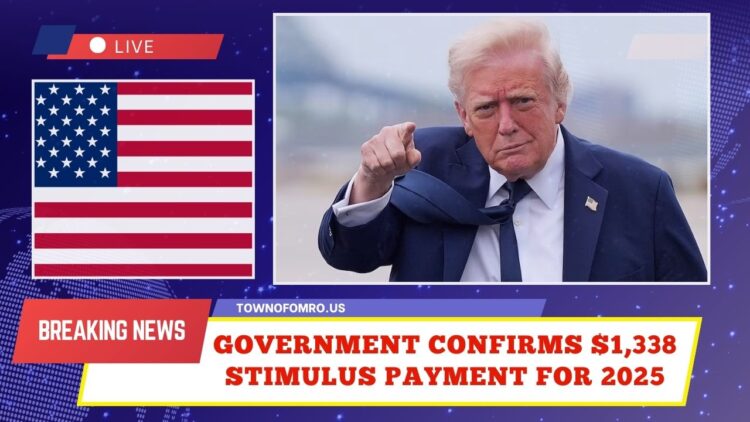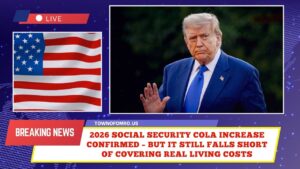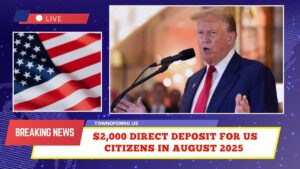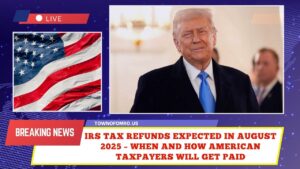Rumors about a $1,338 stimulus have flooded social media, but many readers are still unsure what’s real and what’s clickbait. This guide cuts through the noise with clear, easy-to-read information about eligibility, supposed payment dates, and how genuine federal payments usually work.
You’ll learn the difference between nationwide federal relief and smaller state rebates/credits, what the IRS typically publishes when a payment is legitimate, and simple steps to protect yourself from scams.
We’ve also included a quick checklist so you can verify any “new stimulus” claim in seconds—no guesswork, no confusion.
Whether you’re hoping for direct deposit, wondering about income thresholds, or just trying to avoid fake portals, this article gives you practical, up-to-date guidance so you can focus on real options that may help your household now.
What the $1,338 stimulus claim says
The claim making the rounds suggests the government has confirmed a new $1,338 payment, with eligibility supposedly based on income and dates released for direct deposits and checks. It often appears with dramatic headlines, countdowns, or “apply now” buttons.
Reality: There is no enacted federal law authorizing a $1,338 payment, no IRS announcement, and no official payment dates. Any post insisting you can “claim” a federal $1,338 stimulus today is misleading.
Why these headlines keep popping up
- Clicks and shares: Eye-catching numbers like $1,338 or $1,390 drive traffic.
- Copy-paste rumors: Sites recycle the same script, swapping the dollar amount.
- Confusion with other programs: State rebates, utility credits, or tax adjustments can be mistaken for a new federal stimulus—but they are not the same thing.
How a real federal payment would work
A genuine federal stimulus follows a predictable path:
- Congress passes a bill specifying amount, eligibility, and timelines.
- The President signs it into law.
- The IRS/Treasury publishes official guidance, payment dates, and delivery methods.
Only after these steps would you see authentic eligibility criteria, payment dates, and how-to details on official portals.
At-a-Glance- $1,338 Claim vs. Reality
| Topic | Viral Claim | What’s Actually True Today |
|---|---|---|
| Federal approval | “Government confirmed $1,338 for 2025.” | No confirmed federal stimulus. No signed law authorizing $1,338. |
| Eligibility | “Income limits and dates released.” | No official rules exist. Without a law, there are no thresholds or phase-outs. |
| Payment schedule | “Direct deposits starting soon.” | No IRS schedule has been published for any new nationwide check. |
| How to claim | “Apply via link / small fee required.” | Federal payments don’t require fees or third-party portals. Watch for scams. |
| What is real | “Universal payout now.” | State-level rebates/credits may exist (varies by state), and tax credits can raise refunds—not a federal $1,338 stimulus. |
If a 2025 federal payment ever happens, expect details like these
The following illustrates how past federal payments typically worked. It is hypothetical and provided so you know what to look for—not a confirmation that a new payment is coming.
- Eligibility: Usually tied to Adjusted Gross Income (AGI) and filing status (single, head of household, married filing jointly), with phase-outs at higher incomes.
- Dependents: Prior payments sometimes included per-dependent amounts or separate rules for qualifying children.
- Delivery: Direct deposit if the IRS has your bank info; otherwise paper checks or debit cards mailed to your address.
- Timing: Issued in waves over several weeks; exact payment dates come from official IRS notices after a law passes.
- Non-filers: In earlier rounds, special processes or claim windows existed—but only after the program became law.
Simple 60-second verification checklist
Use this quick test before believing any “new stimulus” post:
- Law check: Has Congress passed a bill and has it been signed?
- Official pages: Do IRS or Treasury pages list the amount, eligibility, and payment dates?
- No fees, no DMs: The government won’t charge you to “unlock” a payment, ask for gift cards, or DM for bank details.
- Exact dates & thresholds: Real programs publish specific dates, AGI limits, and phase-out ranges—not vague promises.
What you can pursue right now
While there’s no confirmed $1,338 federal stimulus, you may still boost your finances through:
- State rebates or credits: Some states offer cost-of-living or tax-rebate initiatives. These vary by state and are not federal stimulus.
- Federal tax credits: Programs like the Earned Income Tax Credit (EITC) and Child Tax Credit (CTC) can increase your refund if you qualify—claimed on your tax return, not via “instant claim” links.
- Utility and energy help: LIHEAP-style energy aid, local utility bill credits, or rental assistance may be available depending on your location and income.
- Avoid scams: Never share Social Security numbers, bank logins, or one-time codes with anyone claiming to “process your stimulus.”
Pro tips to stay safe from “stimulus” scams
- Ignore countdown clocks and “limited-time” claim pages.
- Never pay a fee or send money to receive money.
- Type URLs yourself (don’t click random links).
- Check spelling and domains—typos and fake domains are common red flags.
- Monitor your IRS account (if you have one) for official notices, not rumors.
Despite widespread buzz, the government has not confirmed a $1,338 stimulus payment for 2025. There are no official eligibility rules, no payment dates, and no IRS rollout for a new federal check. If a real program appears, it will follow a formal process—new law, official IRS guidance, and clearly published dates.
Until that happens, treat $1,338 headlines as rumor, focus on legitimate state programs and existing tax credits, and protect yourself from scams.The bottom line: a widely shared $1,338 stimulus headline does not equal a confirmed federal program.
Until there is a new law and clear IRS guidance with official eligibility rules and payment dates, treat bold claims and “apply now” links with caution. Instead, look at concrete options you can use today—legitimate state rebates/credits, refundable tax credits like EITC or CTC, and verified local assistance.
Always avoid fees to “unlock” payments, never share sensitive data with strangers, and rely on official announcements before making financial decisions.
If a real nationwide payment is approved, you’ll see specific amounts, phase-outs, and rollout timelines published openly—no mystery, no paywalls. Stay alert, stay informed, and prioritize proven programs over viral promises.
FAQs
Is the $1,338 stimulus real?
No. As of August 18, 2025, there is no federal law or IRS schedule confirming a $1,338 nationwide payment.
I saw “eligibility and payment dates released.” Should I act now?
Not unless those details appear on official government pages. Without a law, no official dates or thresholds exist—treat third-party claims with caution.
What can I do to get financial relief now?
Look into state rebates/credits, review your eligibility for the EITC or CTC on your next tax return, and ask local agencies about utility/rent assistance—all through official channels only.




